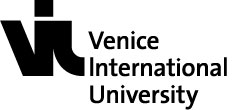F1919 Urban History and Digital Tools: Shaping Capital Cities (1714-1889). Arts, Architecture, Fashion in Paris, London, Milan, Venice
Professors
Schedule
Course description
The course is first focused on the period – around XVII and XVIII centuries- when the notion of capital city had been expanding in its complexity. Actually, such an ancient expression traditionally referred to the place associated with central political power only. Until the XVII century, it was but the town where the royal court lived and the king or the queen used to summon the representatives of the aristocracy, one or two times in a year. Due to a series of factors – and mainly to the growth of the governmental machine-, it was becoming a place with the highest concentration of political, cultural and artistic values. Throughout the Georgian and the Victorian age, not only London and Paris would be increasingly capable of setting global standards for fashion and glamour. Even minor capital cities –such as Venice and Milan- would be able, between the XVIII and XIX centuries, to foster and to host the best artistic and intellectual highlights coming from all over their country.
In the development of the course, a prevailing role will be played by sources - like urban iconography and cartography – which can better record a suite of transformation involving many actors such as painters, scientists, and architects. In an alternation of historical descriptions and technical explanations, the course will start with an overview of historical cartography seen in its development and related to the four case studies: first the metropolis of London and Paris, then cities such as Milan and Venice. For what concerns the XVIII and XIX century in particular, the stress will be put on the Land Register – or “Cadastre”, to be introduced as the first systematic detection system: probably the forerunner of the contemporary ‘information system’ for urban analysis. For each city, the course presents digital tools in order to introduce tools for analyzing and representing –in a comparative way- both urban dynamics and architectural elements. It is increasingly important for understanding how digital tools can be useful for responding to several historical questions even at the urban scale.
One of the final goal is to show how documents can be used to set historical geographical information systems (HGIS). Students will learn to interpret historical documents in bringing about urban evolution analyses, learning how compare maps, how describe patterns in data maps, how identify data sources and how create new maps from cartographic contents.
Among the themes to be specifically dealt with, are the development of tools for control and representation in the XVIII century, referred in particular to London and Paris; Land Registers, Cartography, Urban maps and surveys on a comparative perspective among France, Great Britain and Italy; analysis and rendering of the road routes, and of their transformation; historical analysis in a comparative perspective of some case studies such as Rue de Rivoli and Regent’s Street; focus on the he Opera theatres on a comparative description of Paris and London, of Milan and Venice; dismantling the urban wall in the transition from the ancient regime to the contemporary city (in parallel with the description of digital tools as applied on the perimeter transformations and its impact on the urban shape).
Learning outcomes of the course
One of the main goal consists in making students be familiar with modern analysis tools such as GIS, geolocation. Later, after getting a series of historical notions related to the four case studies, students will be supplied with some and elementary techniques concerning the rendering of urban areas and of buildings clusters. Thanks to this kind of surveys, students will be growing in consciousness about urban history to be dealt not only as suite of historical notions, but also as promising field for the application of modern analysis tools. In other words, the city of the past can also be studied with modern methods based on computer science, starting from the historical geographical information systems (HGIS).
Bibliography
Olsen D., The city as a work of art: London, Paris, Vienna, Yale University Press, London/New Haven,1986
Summerson J-, Georgian London, Penguin, Harmondsworth 1988 (1.st edition 1945)
A. K. Knowels, A. Hillier (editors), Placing history. How Maps, Spatial Data and GIS are Changing Historical Scholarship, ESRI 2002
Required preliminary knowledge
Some elementary notions of computer science, preferably GIS tools, together with a certain familiarity with chronology referred in particular to the modern period, having awareness of the big gap between “ancient régime” and contemporary times.




















